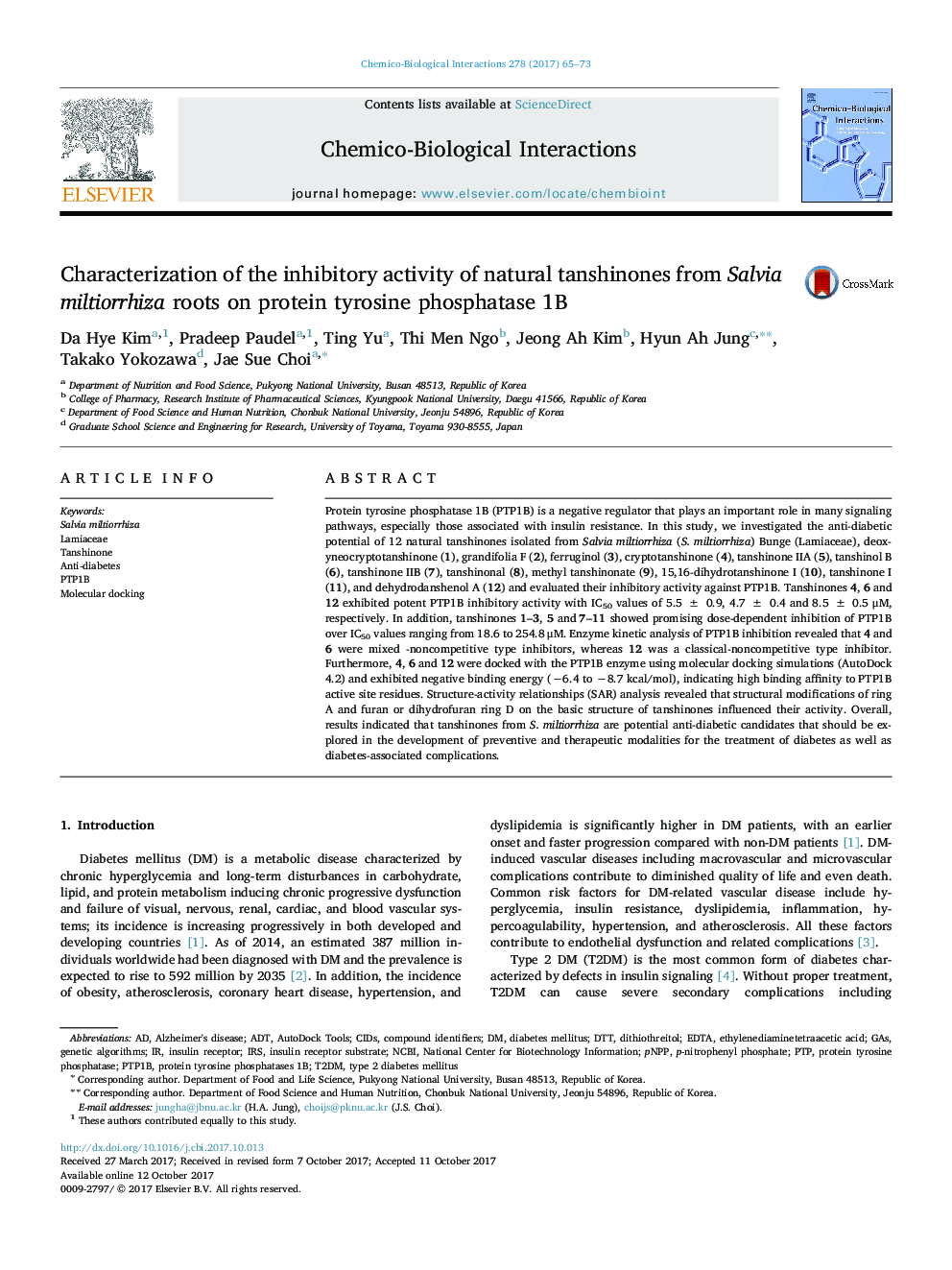| Article ID | Journal | Published Year | Pages | File Type |
|---|---|---|---|---|
| 5559246 | Chemico-Biological Interactions | 2017 | 9 Pages |
â¢Tanshinones from Salvia miltiorrhiza are potential anti-diabetic candidates.â¢Tanshinones 4, 6 and 12 exhibited potent PTP1B inhibitory activity.â¢4 and 6 were mixed-type inhibitors; 12 was a noncompetitive-type inhibitor.â¢Tanshinones 4, 6 and 12 exhibited high binding affinity to PTP1B active sites.â¢Ring A and furan/dihydrofuran ring D on tanshinones influenced their activity.
Protein tyrosine phosphatase 1B (PTP1B) is a negative regulator that plays an important role in many signaling pathways, especially those associated with insulin resistance. In this study, we investigated the anti-diabetic potential of 12 natural tanshinones isolated from Salvia miltiorrhiza (S. miltiorrhiza) Bunge (Lamiaceae), deoxyneocryptotanshinone (1), grandifolia F (2), ferruginol (3), cryptotanshinone (4), tanshinone IIA (5), tanshinol B (6), tanshinone IIB (7), tanshinonal (8), methyl tanshinonate (9), 15,16-dihydrotanshinone I (10), tanshinone I (11), and dehydrodanshenol A (12) and evaluated their inhibitory activity against PTP1B. Tanshinones 4, 6 and 12 exhibited potent PTP1B inhibitory activity with IC50 values of 5.5 ± 0.9, 4.7 ± 0.4 and 8.5 ± 0.5 μM, respectively. In addition, tanshinones 1-3, 5 and 7-11 showed promising dose-dependent inhibition of PTP1B over IC50 values ranging from 18.6 to 254.8 μM. Enzyme kinetic analysis of PTP1B inhibition revealed that 4 and 6 were mixed -noncompetitive type inhibitors, whereas 12 was a classical-noncompetitive type inhibitor. Furthermore, 4, 6 and 12 were docked with the PTP1B enzyme using molecular docking simulations (AutoDock 4.2) and exhibited negative binding energy (â6.4 to â8.7 kcal/mol), indicating high binding affinity to PTP1B active site residues. Structure-activity relationships (SAR) analysis revealed that structural modifications of ring A and furan or dihydrofuran ring D on the basic structure of tanshinones influenced their activity. Overall, results indicated that tanshinones from S. miltiorrhiza are potential anti-diabetic candidates that should be explored in the development of preventive and therapeutic modalities for the treatment of diabetes as well as diabetes-associated complications.
Graphical abstractDownload high-res image (395KB)Download full-size image
